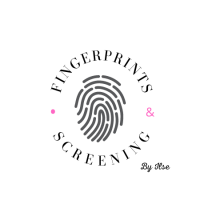What is a fingerprint?
You may have heard of a "fingerprint" before, but what exactly is it? A fingerprint is a pattern of ridges and whorls on the tips of our fingers and thumbs. Our fingers are unique, just like our faces, but unlike our faces, we can't see other people's fingerprints.
A person's fingerprints are like a signature - they show who you are as an individual. They can be used by police to identify suspects or victims after crimes have been committed (and sometimes before).
The word "fingerprint" comes from an old English word meaning "thumbprint". It wasn't until 1823 that Sir William James Herschel first used this term when describing what he called "skin furrows".
What is the history of fingerprints?
The first recorded use of fingerprints to identify people was in India in the 4th century BC. The use of fingerprints to identify people was first proposed by Sir William James Herschel, but it wasn't until 1880 when this practice became more widespread thanks to Juan Vucetich who used them as a way of identifying criminals at crime scenes. In 1892 an English scientist named Francis Galton published research on how he could use fingerprints to tell whether two people were related or not based off their similarities or differences in their prints (which he called "arches"). It wasn't until 1901 that fingerprinting became more widely used around Europe and North America when Scotland Yard implemented its own system based on Galton's findings
For what do we use fingerprints?
Fingerprints are used to identify people
Fingerprints are used to identify criminals.
Fingerprints can be used in the following ways:
- To identify a person by comparing them with those on record; this is known as identification by fingerprinting. This also contains the application of criminal background checks
- To establish proof of identity in criminal cases where there may be doubt about who committed a crime; this is known as identification of suspects by fingerprinting or expert evidence based upon comparison between prints taken from suspects with those found at crime scenes or on other items connected with them (e.g., clothing).
Serie Fingerprints in the Modern world by Professor Daniel Asen.
Professor Daniel Asen has made a series of films on youtube where he explains the basics, history of fingerprints and fingerprints in de modern world, if you are interested in fingerprints, this series is very interesting and worth it to watch!
To remember
We hope you enjoyed this little information about fingerprints, off course we can write a lot more, but we have limited ourselves to the basic information. We know it can be a little complicated, but the important thing to remember is that they are an essential part of our lives. If you have any questions or comments about what we've written here today, then please feel free to leave them below!
